The Worldwide Directory of Museums lists 141 auto-related attractions in North America, and last week I found myself within driving distance of one of them, Swope’s Cars of Yesteryear in Elizabethtown, Kentucky. It’s about an hour from Louisville, and located right smack dab in the middle of what made it possible—the Swope family’s network of car dealerships, a/k/a “The Miracle Mile.”
Bill Swope was a World War II veteran and Battle of the Bulge survivor. He and Betty married in 1945, moved to Elizabethtown in 1961 (where Bill opened his first Dodge-Plymouth dealership with brother Sam), had four kids, and were together for 71 years. They’re both gone now, and son Carl runs the franchises—which have moved more than half a million cars and trucks. The museum is Bill’s legacy. “Everybody has a car story to tell,” he used to say.
The museum’s 60-odd cars, from the dawn of the automobile through the 1960s, reflect Bill and Betty’s personal tastes. And they have stories attached. Not surprising, because some of them have passed through many hands for more than a century. I always thought it strange that author and car lover Clive Cussler put together a glossy book about his extensive collection of classics but didn’t tell the cars’ individual stories—just the engineering facts. Wasn’t he a born storyteller?
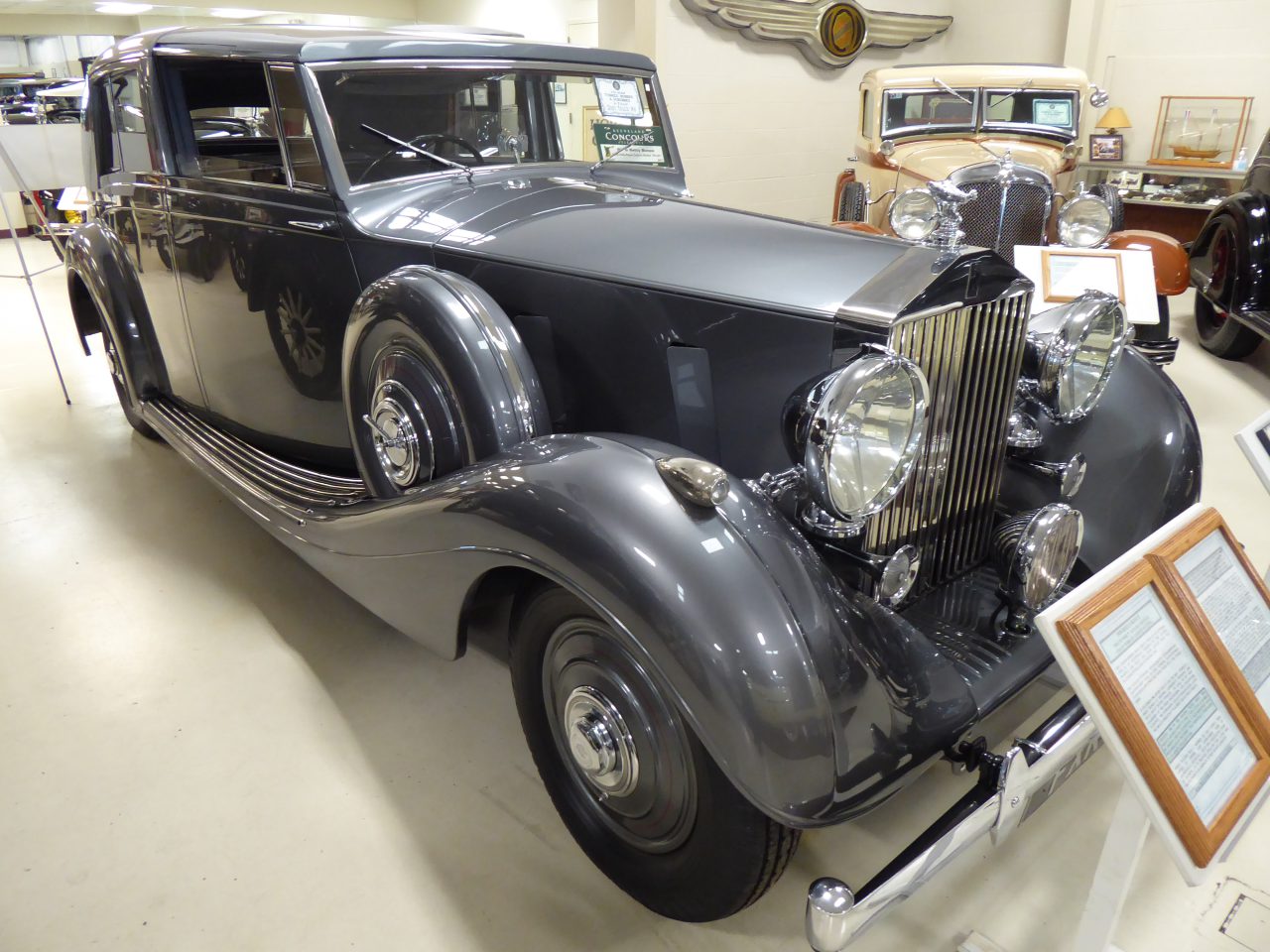
My favorite Swope car story concerns a majestic 1939 Rolls-Royce Wraith 75 Sedanca with coachwork by Gurney Nutting. The car—one of the last Rolls-Royce cars built before the war broke out—was delivered to Orton Hall, the family seat of the Marquess of Huntly, and replaced their vintage Silver Ghost.
It happened that the 11th Marquess of Huntly, a Scottish nobleman named J. Campbell Gordon, had an American relative from Kentucky, Midge Wagner—a horsewoman and adventuress who piloted planes and was a patron of the arts. Wagner and her sister were orphaned at an early age, and adopted by the Marquess in 1929. In 1939, just as war broke out, Midge was visiting the Marquess’ 17th century manor house, Orton Hall (now a hotel). She was there when the new $13,000 Rolls was delivered, and was photographed with her sister and Arthur Bradley Campbell in front of the two cars.
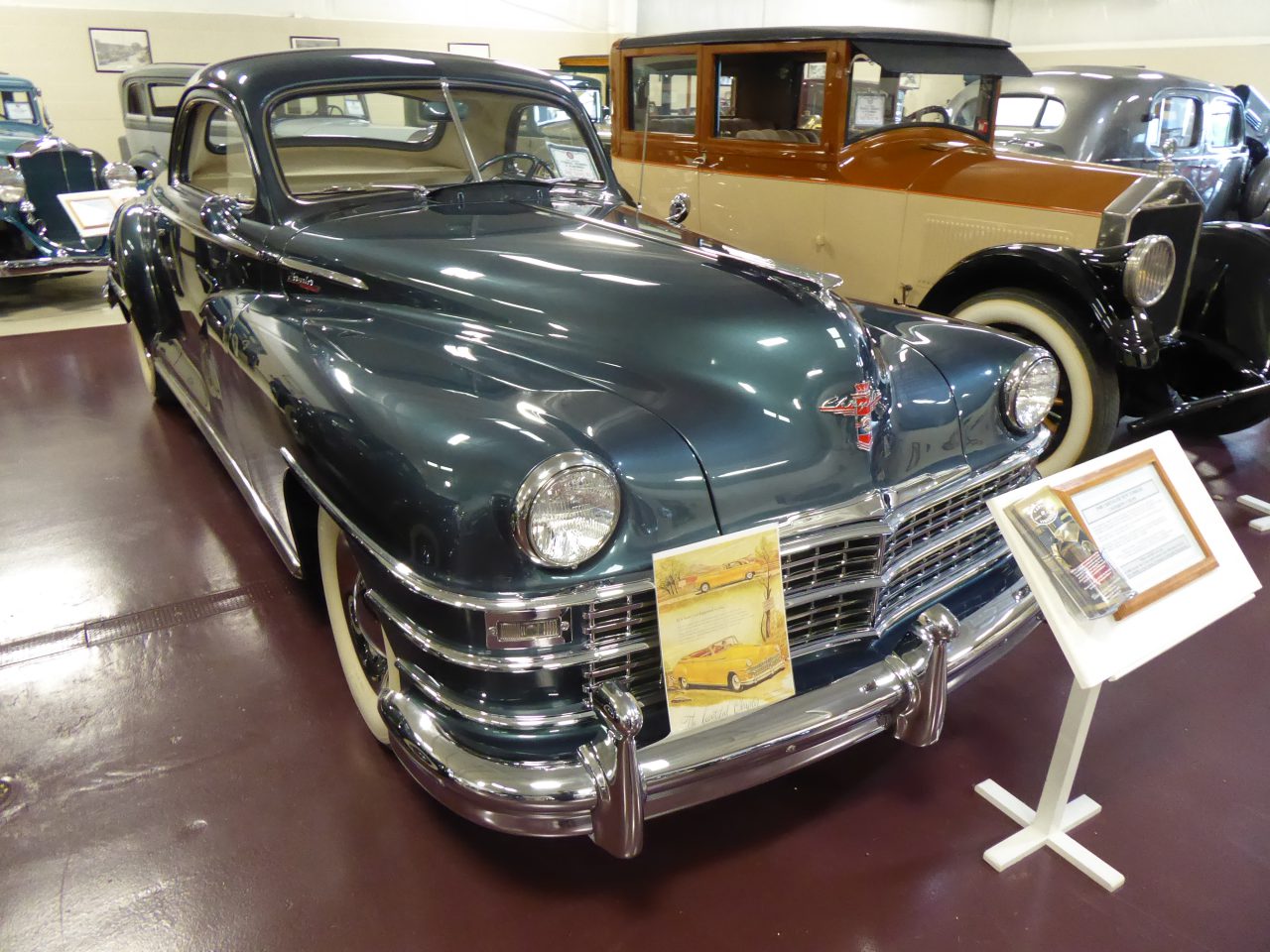
Perhaps unwisely, the family chose to tour Germany in the new Rolls, and there ate at a restaurant that also seated the Fuhrer himself. A minion was sent to the Wagner table telling them to put out their cigarettes—Hitler didn’t like smoking. The Wagners returned to the U.S. that year, and the Rolls also came over when the war ended.
For her last 40 years, Wagner lived at her Copper Coin Farm in Kentucky, which bred American Saddlebred horses. She lived until 2011, but at some point the one-family Rolls became surplus to requirements and was sold to Bill Swope. It’s one of three Rolls-Royces in the collection; another, a red 1936 Phantom III with a H.J. Mulliner body and a division window, had a starring role in a Hallmark movie—with Raquel Welch supporting. It was hibernating in Louisville circa 2003 when Swope found it.
I also admired a green 1948 Chrysler New Yorker C39-N three-window coupe, with its wide chrome grin. It’s a rare car—only 701 were made, and four are left. When it was 50 years old, it came in second in the 1998 “Great Race Across America,” from Tacoma, Washington to Haverhill, Massachusetts.
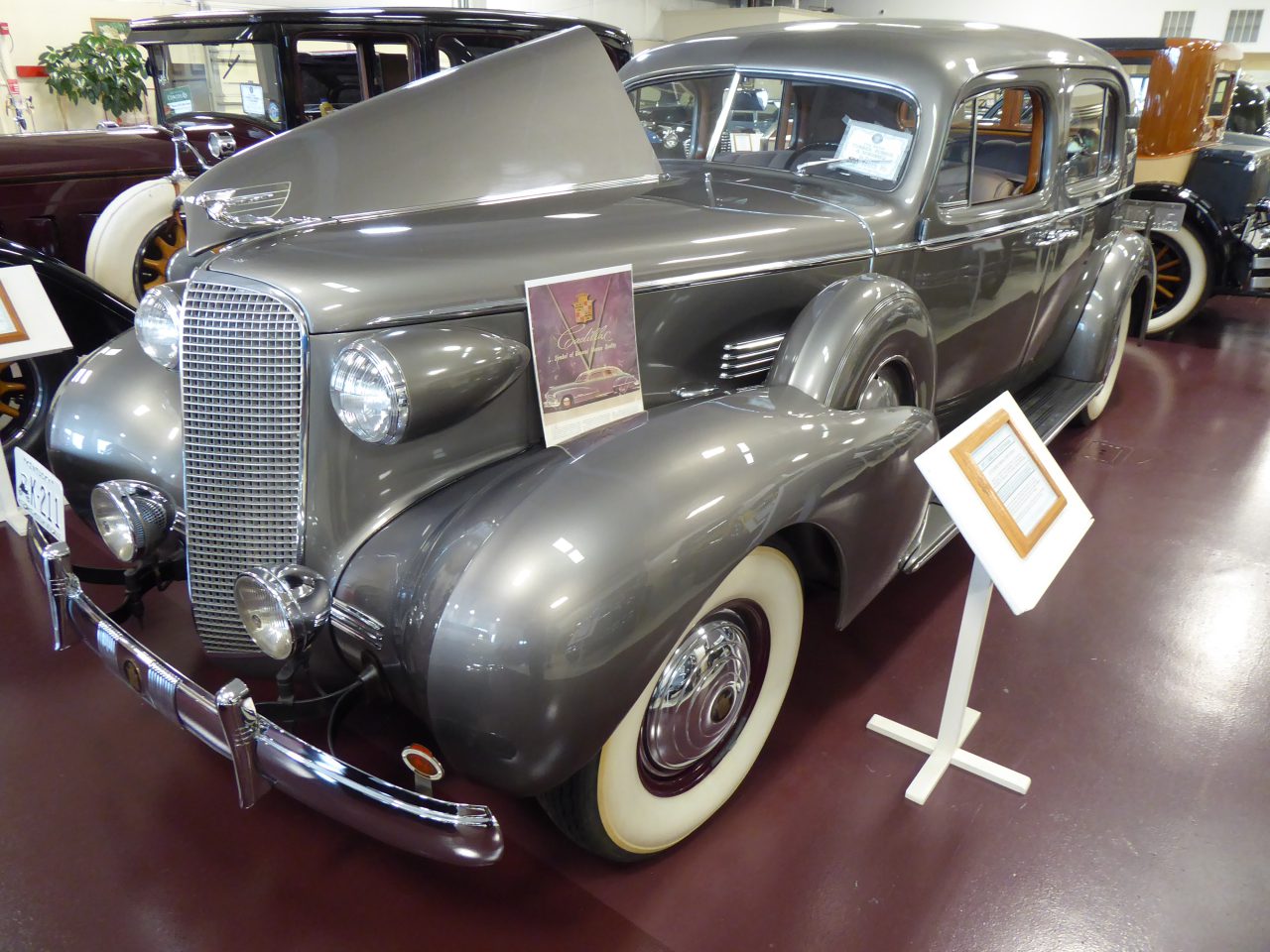
Equally imposing was a 1937 Cadillac Fleetwood formal town sedan with V-12 power. The original purchase price was $3,535, and Swope informs us “you could have purchased six Chevrolets for that kind of money.” Approximately 80 Formal Town Sedans were produced that year, and Swope’s is reportedly one of only two left.
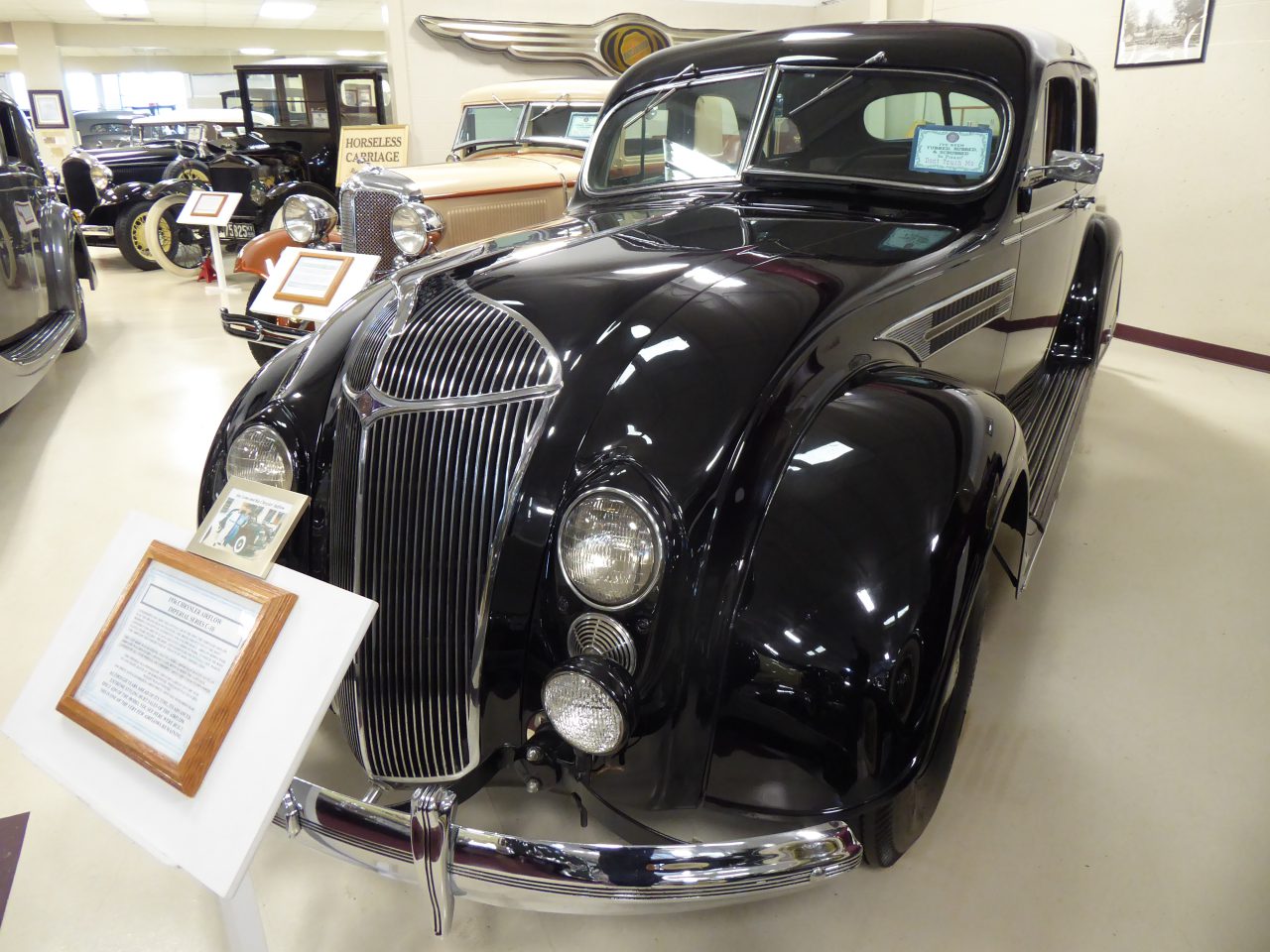
The museum has two examples of that noble failure, the aerodynamic Airflow, in Chrysler and DeSoto guises. There’s a dozen Packards, extending into the 1950s, when the marque did a slow fade. And I should mention the 1914 Renault station hack with body by Beins and Zelhimbod in Brooklyn. Model T Fords (the museum has four) were more usually employed for this duty—the French-made Renault must have been quite exotic then.
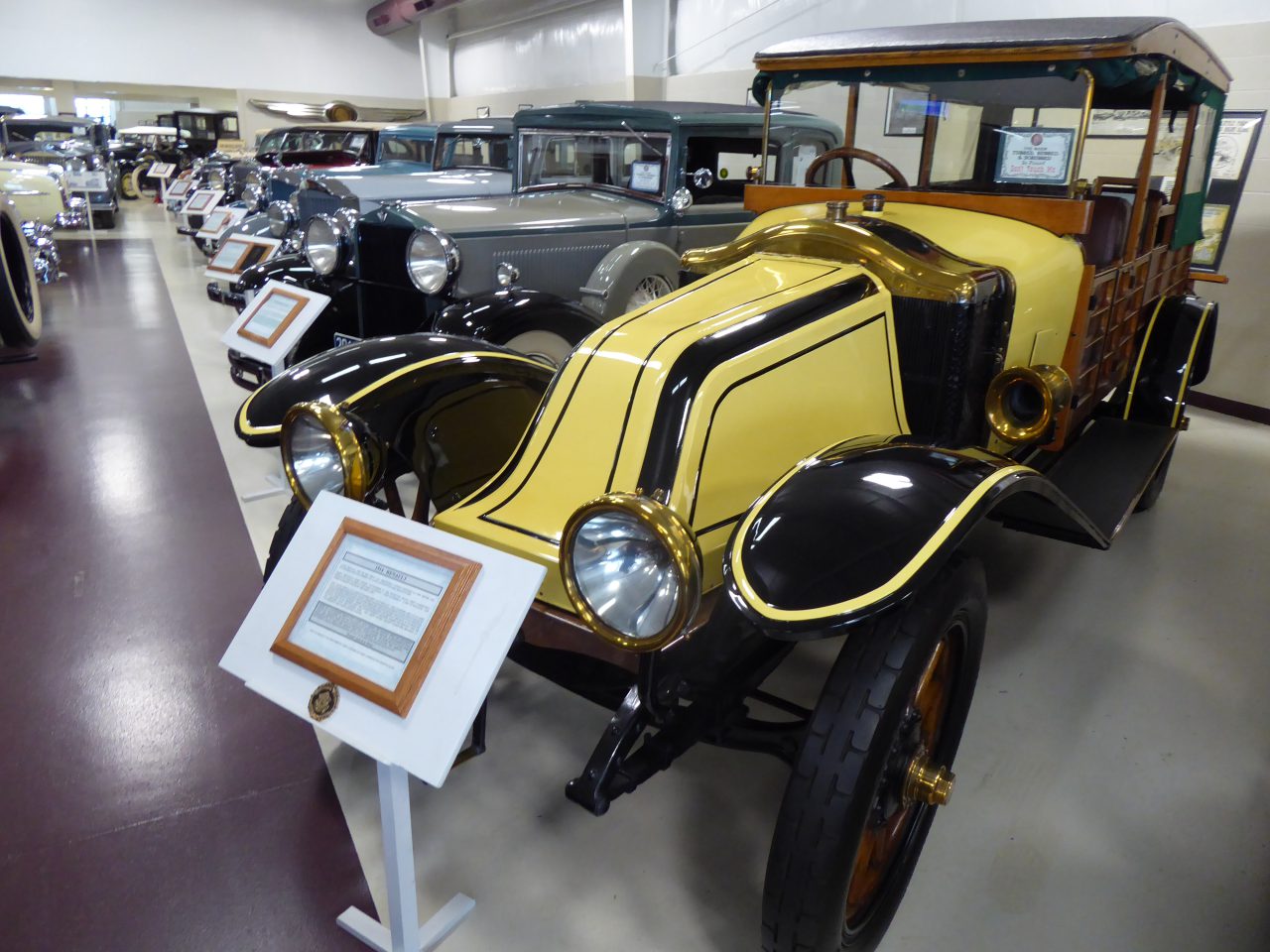
The car has a story. It was originally a Paris taxi. During World War I, it was one of 600 that 600 that were used to—successfully—outflank the German army. The British were using Rolls-Royces at the same time. The Renaults were affectionately dubbed “Taxis de la Marne.”
All the cars are registered and drivable. They’re driven regularly, and entered in competitions. A few were on assignment when I visited. The newest car I saw was a 1969 SS Camaro, but a 1970 429 Torino SCJ is around somewhere. The 1964 Chevrolet Impala SS convertible was in the ultimate specification—a 409 with a four-speed manual.
I didn’t meet Bill Swope, but through his detailed—and accurate—captions describing the cars it feels like I did. I’ve been to a lot of car museums, but I bet there are 130 I haven’t yet visited. My duty is clear.
Swope’s Cars of Yesteryear Museum, 1080 North Dixie Avenue, Elizabethtown, Kentucky. (270)763-6175. Admission is free! Doors are open Monday to Saturday 10 to 5 in the summer.



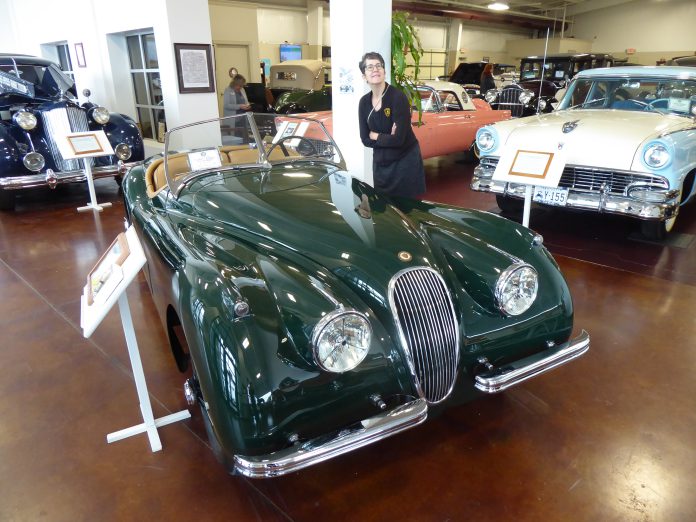


This was a very enjoyable read, Jim. Thanks for sharing your visit with us.